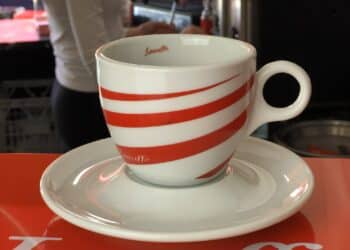As Melbourne emerges from lockdown, a study released by urban planning experts suggests that footpath extensions could be the answer to strict indoor dining capacity limits.
With businesses looking to keep their doors open, the study says there is evidence that temporary footpath extensions made by several councils should be permanent, with traffic to pedestrian ratios considered “always out of whack” in many shopping strips.
The study, which was conducted on 57 inner-city Melbourne shopping strip locations, found that pedestrians were being “short-changed”, with only 33 per cent of street space provided, as compared to 56 per cent given to traffic.
Dr. Chris De Gruyter from the Royal Melbourne Institute of Technology’s (RMIT) Centre for Urban Research says it’s time to think smarter about how we divvy up precious street space.
“We found there’s an undersupply of space for pedestrians, compared to what’s given to parked cars, motorists and other road users,” he says.
“As governments look to increase outdoor dining and activity spaces, they’re rethinking the layouts of shopping strips. Now we have proof these should not be temporary measures – we need to share the space effectively and adapt as trends change.”
For example, in Puckle Street Shops located in Moonee Ponds, pedestrians accounted for more than 80 per cent of those using the street but were given only 35 per cent of the street space, in the form of footpaths.
Chris says this research into street space allocation is the first of its kind in Australia and should be used to empower councils like Moonee Valley – where mayor Cam Nation recently floated the idea of shutting down a street to motorists over summer in favour of outdoor dining parklets – to make informed decisions.
“Street space is hotly contested, particularly where high traffic flows conflict with popular places and key destinations,” says Cam.
“But we knew little about what was allocated and used by each mode of transport in cities, despite the importance of fairly allocating street space.”
The study also found exclusive tram lanes were slightly oversupplied, on an average of 22 per cent of total space versus 18 per cent of total people, as were shared general traffic, tram, or bus lanes that took up 35 per cent of total space versus 30 per cent of total people.
However, other street elements were greatly oversupplied on average, particularly bicycle lanes, which took up 12 per cent of total space versus two per cent of total people, car parking which took 21 per cent of total space versus 13 per cent of total people, and shared general traffic and bus lanes, which accounted for 42 per cent of total space versus 29 per cent of total people.
Despite the oversupply of space for bicycle lanes, Chris says usage would certainly increase if they were more than just a painted white line and converted to Copenhagen style lanes, which are separated from car lanes.
Between October and December 2020, researchers measured each site in terms of the amount of street width provided to each mode of transport, including shared space.
They returned to some locations in March and April 2021 – during relaxed COVID restrictions – and found the overall conclusions were the same: street space for pedestrians was undersupplied and could be increased at some places through converting existing on-street parking.
With cities increasingly looking to embrace sustainable transport, like walking, cycling, and public transport, knowing how much space to give to each mode is crucial.
“It is also relevant in the context of COVID, where more space is being sought to support physical distancing and outdoor gatherings,” says Chris.
Chris is continuing to inform local governments on how their streets are used to provide an evidence base for planning decisions.
For more information, click here.




